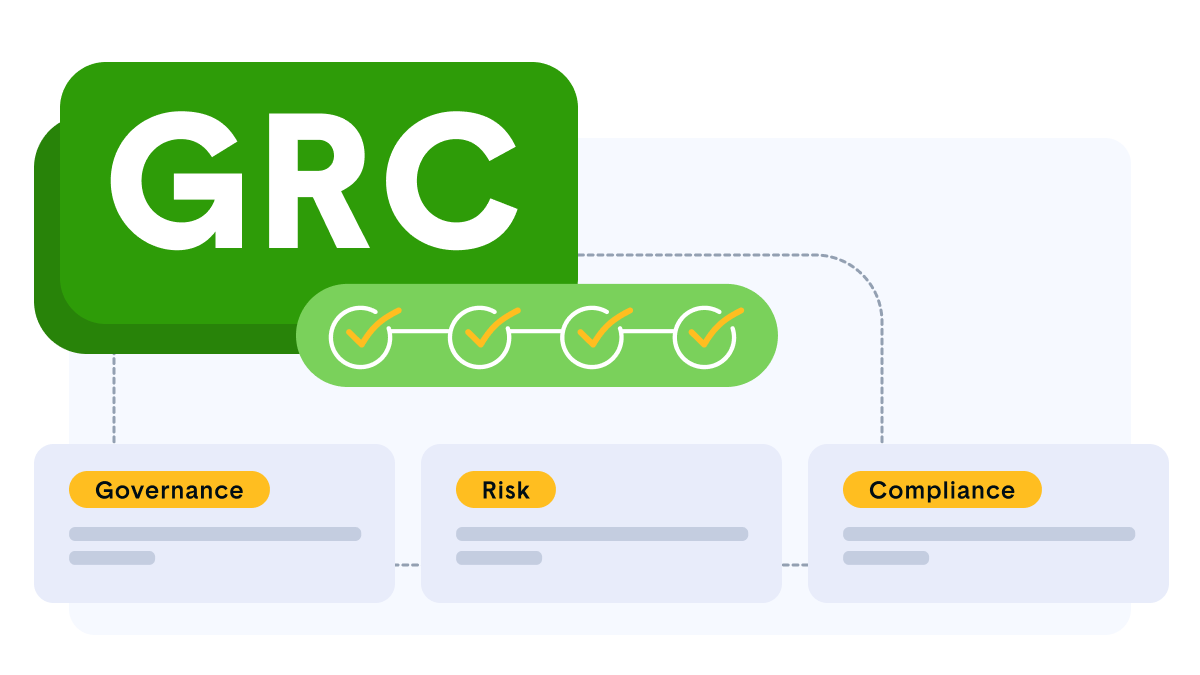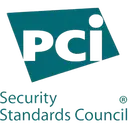Every organization relies on vendors, suppliers, and other third-party relationships to deliver goods and services. Indeed, it’s not uncommon for many organizations to have hundreds (even thousands) of third parties offering all types of products and services, some critical to their operations. While these third-party relationships drive innovation and efficiency, they also expose organizations to potential risks like data breaches, compliance issues, and operational disruptions.
To address these risks, businesses must perform thorough third-party risk assessments. This proactive approach protects sensitive data, ensures compliance, and safeguards operations. In this blog post, we’ll explore how to effectively assess and manage risks within your third-party ecosystem while mitigating potential vulnerabilities.
Key takeaways
- Third-party risk assessments help identify and mitigate risks associated with vendors and suppliers
- Effective assessments require clear processes, ongoing monitoring, and collaboration with business partners
- Adopting a vendor risk management program strengthens your security posture, compliance, and business continuity
What is a third-party risk assessment?
Third-party risk management (TPRM) is generally conducted before engaging with a third party and is ongoing while we have a working relationship with the third party.
Third-party risk assessment is the process of identifying, analyzing, and addressing risks posed by external vendors, suppliers, and partners. These assessments evaluate a vendor’s ability to safeguard sensitive data, maintain regulatory compliance, and ensure business continuity.
For example, an organization might assess a vendor’s cybersecurity measures, operational practices, and compliance risks. By understanding a vendor’s risk profile, businesses can take steps to:
- Determine the best third parties to partner with
- Identify and address any vulnerabilities that may exist
- Strengthen their risk management strategy
What are the key third-party risk types?
Your default thinking may be: ‘We only work with highly qualified and reputable partners.’ So, it’s worth pausing to consider the risks to which any third party can expose your organization.
No matter how established a vendor is, you’re taking on additional risk when you work with external vendors, suppliers, or contractors. Some of these are more apparent, such as data breaches, while others may be less obvious but equally significant. Let’s consider some common risks your organization should consider when evaluating third-party relationships:
1. Data breaches and security risks
When a third party has access to sensitive information, such as customer data or intellectual property, poor security practices can lead to third-party data breaches. These breaches may result in financial losses, legal liabilities, and reputational damage.
For example, if a vendor fails to secure their systems properly, attackers might exploit vulnerabilities to access your data, compromising your overall security posture.
2. Compliance risk and regulatory risks
Third parties that fail to meet industry regulations or legal requirements can put your organization at risk. If a vendor mishandles sensitive information in violation of privacy laws, your business could face penalties—even if the breach was not your direct fault.
Managing compliance risk involves ensuring that your partners adhere to relevant regulatory requirements and data protection standards.
3. Business continuity and operational disruption
Operational disruptions, such as system outages, financial instability, or production delays, can ripple through your organization when they originate from a critical third party.
This scenario highlights the importance of assessing operational risk, especially for vendors providing essential services or goods. Such disruptions can threaten business continuity and force costly adjustments.
4. Financial risk
Another potential vulnerability is a third-party vendor’s financial health. Vendors facing bankruptcy, cash flow issues, or other financial challenges may be unable to deliver contracted services, resulting in supply chain delays, unfinished projects, or direct financial losses for your organization.
5. Brand reputation and association risks
Your vendors’ actions reflect on your business. If a vendor is involved in unethical practices, scandals, or poor conduct, your organization’s reputation may suffer by association. This risk underscores the importance of thoroughly vetting your business partners before engagement.
6. Dependency and vendor concentration risks
Overreliance on a single vendor for critical services can lead to vendor lock-in. This dependency reduces flexibility and may result in higher costs if the vendor raises prices, fails to innovate, or experiences their own challenges.
7. Service delivery and quality assurance
When third-party vendors fail to meet your quality standards, the consequences can extend to your products or services, causing customer dissatisfaction and revenue loss. Monitoring and managing vendor relationships is critical to maintaining consistent quality across the board.
8. Proprietary information and IP protection
Sharing proprietary information with external vendors exposes your business to intellectual property risks. Unauthorized use, theft, or mismanagement of your proprietary data by a third party can compromise your competitive edge and create legal challenges.
9. Extended supply chain vulnerabilities
Your supply chain can be vulnerable to external disruptions, such as natural disasters, geopolitical tensions, or transportation delays. These issues can impact production schedules and your bottom line, emphasizing the importance of robust supply chain risk assessments.
10. Limited oversight and governance challenges
Working with third-party vendors inherently limits the control you have over their processes and actions. This lack of control can make it difficult to enforce your desired security measures, risk management strategy, or quality standards, further amplifying the need for thorough vendor assessments and ongoing monitoring.
How do you implement effective third-party risk management?
Effectively managing third-party risk requires a proactive and structured approach. Let’s explore the best practices your organizations can adopt to minimize vulnerabilities and foster resilience in their third-party relationships:
Adopt a risk management strategy
Start by implementing a comprehensive risk management strategy tailored to your organization’s needs. This involves:
- Identifying risks: Conduct a thorough risk assessment of potential vendors, examining their operations, financial stability, and compliance history
- Prioritizing risks: Classify risks based on their likelihood and impact, ensuring that critical areas like data security, compliance, and business continuity receive focused attention
- Mitigating third-party risks: Develop risk mitigation plans, such as requiring vendors to adhere to stringent security posture standards or carrying out regular audits
Foster strong vendor relationships
Building solid and transparent relationships with your business partners can help address concerns before they escalate. Here’s how:
- Regular communication: Schedule periodic check-ins with vendors to discuss performance, compliance, and emerging risks
- Collaborative improvement: Work together to resolve challenges, whether they relate to operational risks or improving their security posture
- Incentivize compliance: Offer rewards or continued contracts for vendors that consistently meet or exceed your regulatory requirements and quality standards.
Leverage technology for vendor risk management
Using technology can significantly streamline the vendor risk assessment process and improve accuracy. Consider:
- Vendor risk management programs: These tools automate workflows, track assessments, and monitor third-party risks in real time
- Ongoing monitoring: Solutions that provide continuous oversight of vendors’ security risks and compliance status ensure that risks don’t slip through the cracks
- Data insights: Advanced analytics can highlight trends and potential weaknesses in your third-party ecosystem, enabling more informed decision-making
Include the supply chain in risk management
Your supply chain may include indirect vendors whose risks could impact your organization. Best practices for addressing supply chain risks include:
- Assessing indirect vendors: Evaluate all vendors, not just those with direct relationships, to understand the broader third-party ecosystem
- Building redundancy: Avoid over-reliance on a single supplier by diversifying your vendor relationships
- Preparing for disruptions: Incorporate contingency plans to mitigate risks, such as those arising from natural disasters or cybersecurity risks
Establish vendor risk assessment standards
Developing a standardized approach for vendor risk assessments ensures consistency and thoroughness. This might include:
- Vendor risk assessment questionnaires: Use detailed forms to evaluate a vendor’s security risks, compliance measures, and operational reliability
- Defining vendor risk profiles: Classify vendors based on their inherent risks and prioritize oversight accordingly
- Clear contract terms: Specify compliance expectations, penalties for breaches, and responsibilities related to third-party relationship management.
“When it comes to working with third party vendors, organizations can minimize exposure to risks and data breaches by conducting a thorough vendor due diligence review. As part of an organization’s vendor management process, a review of vendors is essential to minimize risks. The review should include aspects related to security, privacy, and AI since most vendors are now incorporating AI into their product/service offerings. Having contractual obligations in place with indemnity clauses can also assist in minimizing the financial impact of a data breach.” – Jay Trinckes, Data Protection Officer, Thoropass
Invest in training and awareness
Organizations should educate internal teams about the importance of managing third-party risks. Key steps include:
- Risk awareness programs: Train employees on identifying potential vendor issues, such as compliance risks or data breaches
- Vendor-specific policies: Ensure all teams interacting with vendors understand the assessment process and can recognize potential risks in the third-party ecosystem
How does enterprise-grade third-party risk management work?
At Thoropass, our Third-Party Risk Management (TPRM) Program is built on a hybrid framework that combines the strengths of globally recognized standards and frameworks, including:
- National Institute of Standards and Technology (NIST)
- International Organization for Standardization (ISO)
- The American Institute of Certified Public Accountants (AICPA)
- System and Organization Controls (SOC)
- Trust Services Criteria (TSC)
- Information Commissioner’s Office (ICO)[UK] related to the General Data Protection Regulation (GDPR)
- Other generally accepted best industry practices (and frameworks)
By integrating these frameworks, we ensure our approach to managing third-party risk is both comprehensive and adaptable. This methodology allows us to maintain the highest possible TPRM standards, addressing a wide range of compliance risks, security risks, and operational challenges.
Additionally, this hybrid framework enables us to guide our clients toward achieving similar standards of excellence. By aligning with proven best practices and global compliance requirements, we help organizations mitigate their third-party risks, strengthen their risk management strategy, bolster business continuity, and foster resilient vendor relationships.
Let’s look at Thoropass’s third-party risk management process to see how this all works in action. Our vendor process begins with the need for a product (or service) a third-party service provider can provide. We have the requestor complete a vendor assessment and business justification form. This form consists of four parts:
1. Third-party general information
Third-party management begins with collecting the basics:
- The name of the third party
- Description, website
- Privacy notice
- Terms of service
- Security
- Sponsor/requestor name
- Date/time of submission
2. Third-party and finance-specific information
This information includes terms and cost information and an overview/benefit of the product/service. The requestor must explain the issues we are trying to solve and how working with the third party will solve these problems. The requestor will detail the value proposition of working with the third party and describe other third parties they evaluated in making this vendor recommendation.
The requestor must abide by our Procurement and Expense Policy, which includes:
- Obtaining approval from a department head (as necessary)
- Obtaining a W-9 form
- Having the third party complete a vendor form
- Including certain clauses (such as privacy, security, limitations, etc.) in contracts/agreements
3. IT and compliance-specific information
This section includes criteria defining the need for a security and privacy review. Almost any software application, program, or third party that is utilized, integrated, accessed, collected, or has a financial impact will require a review.
The requestor will assign a ‘criticality rating’ and a ‘vendor risk rating’ based on defined criteria and their rating rationale.
If they are unsure, the ratings will default to medium for further evaluation by our Chief Information Security Officer, Data Protection Officer, Operations Lead, and Finance Lead.
For instance, we define vendor criticality as:
- High: We rely on the application daily, and if the application fails, it would seriously disrupt operations OR the third party provides a critical product and replacing it would be difficult/costly
- Medium: We utilize the application daily, but our operation doesn’t depend on its use, OR if the application fails, it won’t seriously disrupt operations—replacing the application would cost some effort or money, but not difficult/costly
- Low: We utilize the application intermittently; if it fails, it does not impact business operations
We define vendor risk as:
- High: The third party accesses, handles, or stores sensitive/confidential information (either internal, external (customers), or both)
- Medium: The third party may have some knowledge of our customers but no access to sensitive/confidential information
- Low: The third party cannot access sensitive or confidential information
In addition, we ask about the third party’s reputation and any attestations/certifications they’ve obtained.
4. Privacy risk screen assessment
We ask 13 questions as part of our supplier risk assessment. After determining the type of data collected or stored by the application (to include processing of either employees, customers, or both), the following questions must be answered:
- Does the application use profiling or automated decision-making, or does the application run algorithms to score/rate responses impacting an individual?
- Does the application process personal data in a way involving tracking individuals’ online/offline location/behavior?
If the answer is ‘yes’ to any of these questions, we will conduct an enhanced evaluation, which could include performing a data protection impact assessment (DPIA).
How does technology transform third-party risk management?
Compliance software can help mitigate third-party risks by streamlining the processes of assessing, monitoring, and mitigating risks associated with vendors, suppliers, and partners. Here’s how it may help:
Automated assessment workflows
Compliance software simplifies the vendor risk assessment process by automating the creation, distribution, and analysis of questionnaires. These tools help organizations efficiently evaluate a vendor’s security posture, compliance, and operational risks, reducing manual effort and ensuring consistency.
Centralized vendor management
With compliance software, organizations can maintain a centralized repository of vendor information, including third-party relationships, contracts, and risk profiles. This enables businesses to monitor the entire third-party ecosystem in one place, ensuring no vendors, including those in the supply chain, are overlooked.
Continuous risk surveillance
The software facilitates ongoing monitoring of vendor compliance and performance. Alerts and dashboards can notify organizations of changes in a vendor’s risk profile, such as financial instability or data breaches, ensuring timely action to mitigate risks.
Enhanced reporting and analytics
Compliance software provides robust reporting and analytics capabilities, helping organizations track and manage risks over time. This reporting makes it easier to identify trends, assess the effectiveness of a vendor risk management program, and demonstrate compliance with regulatory requirements.
Multi-framework compliance alignment
By aligning with industry standards like NIST, ISO, or GDPR, compliance software ensures that third-party risk assessments adhere to regulatory requirements and best practices. This reduces the risk of non-compliance and associated penalties.
Conclusion: Protect your business from third-party risks
Conducting a thorough third-party risk assessment is essential for protecting your business from vulnerabilities introduced by external vendors. Whether it’s safeguarding sensitive data, maintaining regulatory compliance, or ensuring operational continuity, these assessments are integral to effective risk management.
Leveraging compliance software can transform how you manage third-party risks. From automating the assessment process to enabling ongoing monitoring, these tools streamline workflows, improve accuracy, and centralize vendor data for a more proactive approach. By integrating compliance software into your risk management strategy, you can mitigate risks, strengthen vendor partnerships, and ensure resilience across your third-party ecosystem.
Ready to learn more about Thoropass? Request a demo today.
More FAQs
What is a 3rd party assessment?
A third-party assessment evaluates the risks of engaging external vendors, suppliers, or service providers. This process involves examining a third party’s practices, policies, and operations to ensure they meet an organization’s security, compliance, and operational standards. Organizations can make informed decisions about whether to engage or continue working with a vendor by identifying vulnerabilities, such as weak security measures or compliance gaps.
The scope of a third-party risk assessment often includes areas like data security, financial stability, regulatory compliance, and operational reliability. It ensures that third parties do not introduce risks that could harm the organization’s reputation, operations, or sensitive data.
What is an example of a third-party risk?
An example of a third-party risk is a data breach caused by a vendor’s inadequate cybersecurity practices. For instance, if a payroll service provider fails to secure employee information correctly, it could result in a breach that exposes sensitive personal and financial data.
Another example is operational risk: Imagine a logistics company relying on a single supplier for critical components. If the supplier experiences a disruption, such as a factory fire or a shipping delay, the logistics company’s ability to fulfill orders could be severely impacted, leading to financial and reputational losses.
Why is third-party risk assessment important?
A third-party risk assessment is vital because it helps organizations identify and mitigate risks that external vendors and partners can introduce. These risks may include data breaches, regulatory non-compliance, operational disruptions, or financial instability. By proactively assessing these risks, organizations can protect their sensitive data, maintain regulatory compliance, and ensure business continuity.
Failing to conduct regular risk assessments can leave organizations vulnerable to legal penalties, financial losses, and reputational damage. As businesses increasingly rely on third parties for critical services, a robust third-party risk management program becomes essential for safeguarding operations and maintaining stakeholder trust.
How to create a third party risk assessment?
Creating a third-party risk assessment involves several steps:
- Identify third-party relationships: Compile a list of all vendors, suppliers, and partners with access to your systems, data, or operations
- Define risk categories: Establish criteria for evaluating risks, such as cybersecurity, compliance, operational reliability, and financial stability
- Develop a vendor risk assessment questionnaire: Use this tool to collect relevant information about the third party’s security measures, compliance practices, and operational processes
- Analyze the vendor’s risk profile: Assess the information gathered to determine the vendor’s inherent risk level and whether additional controls are needed
- Implement ongoing monitoring: Continuously review vendor performance and risks over time, incorporating technology to streamline the process.
By following these steps, organizations can establish a consistent and thorough risk assessment process that protects against potential risks in their third-party ecosystem.

Related Posts
Stay connected
Subscribe to receive new blog articles and updates from Thoropass in your inbox.
Want to join our team?
Help Thoropass ensure that compliance never gets in the way of innovation.













.png)